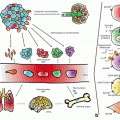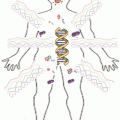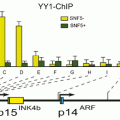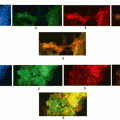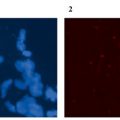Fig. 17.1
The map of cancer development . (Adopted from P. Mehdipour’s archive)
Epigenetic as the result of genes/environmental interaction, through embryonic at the right time and precise direction and well defined target, at either somatic or germ cells, Pre-natal and post-natal periods, may be reversible. By considering the mosaicism and clonal diversity and expansion, it is worth to emphasize on inheritable capacity through somatic cells. Epigenetic interact with gene expression, genome stability, specific expression of imprinted genes, cell cycle, X-chromosome inactivation, and chromosomes. It has also key impact on gene expression, cell differentiation, tumor- initiation, development and progression. Epigenetic processes which lead to a change of genetic activity and inactivity have meanwhile been reported for all phyla of animals (Lyon 1974) :
At a glance, the key topics in cancer Epigenetic consist of the followings aspects (Chap. 1):
1.
Aberrant identification of methylation patterns.
2.
Hypermethylation of CGIs in tumor suppressor genes that leads to genes’ silencing.
3.
Hypomethylation leads to activation of oncogenes.
4.
Balance between “stability and susceptibility to developmental and environmental stimuli”.
5.
Prevention.
6.
Personalized clinical management within the pedigree of proband.
However, the key question is ‘How is the epigenetic machinery programmed?’ (Fig. 17.2 )
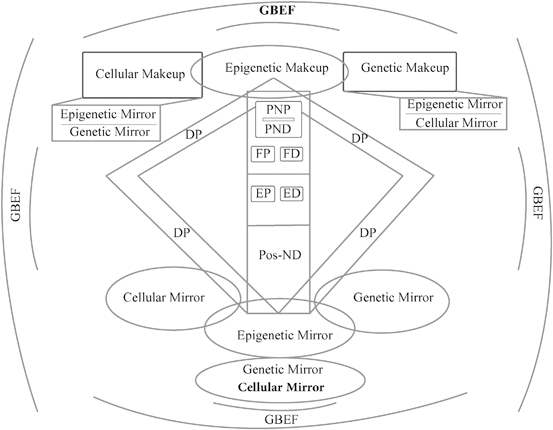
Fig. 17.2
Epigenetic programming . (This scheme illustrate the interactive programming and the process of multi-events through the life). (BPP beneficial preventive programming (as positive PP), DP developmental process, ED embryonic development, EF environmental factors, EP environmental programming, EP embryonic programming, FP fetal programming, FD fetal development, GBEF genetic based environmental factors, HEF hazard environmental factors (as negative PP), PNP pre-natal programming, PND pre-natal development, Pos–ND post-natal development, P/N–PP positive/negative preventive programming). (Adopted from P. Mehdipour’s archive)
Manner of developmental process is considered as an event through the whole period of life which is reflective of the inhibitory and stimulatory elements. The outcome is the matter of cooperation or inhibition.
The tower of programming includes the embryonic -, fetal-, pre-natal-, and post natal- development, as a non-stop process. Is it an infinitive event?
Moreover, Epigenetic is capable to translate its influential potentials at different stages of life including pre-zygotic, post-zygotic, through embryonic developmental period and post- natal duration, but with diverse impacts. In fact, we face the diverse impact (DI), diverse function (DF), diverse interaction (DIn), in diverse cell territories (DC), and at different ages (DA) (Fig. 17.3).
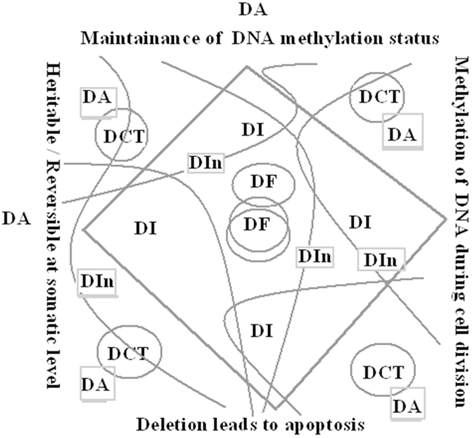

Fig. 17.3
Diverse- methylation process, target and function at different ages . (DA different ages, DCT diverse cell territories, DI diverse impact, DF diverse function, DIn diverse interaction). (Adopted from P. Mehdipour’s archive)
The rapid evolution in the field of Epigenetics seems to be linked to developmental process.
Developmental Epigenetic leads to alteration of genetic motion and indolence which have been recognized in the animals with bilateral symmetry, also known as phyla animals (Lyon 1974) .
17.2 Book Chapters at a Glance
The present book is divided to 17 chapters under 4 major sections including fundamental (Chaps. 1–5), brain (Chaps. 6–9), breast (Chaps. 10–12), sporadic section (Chaps. 13–16), and final mini-chapter 17.
Chapter 1 reflects a deep exploring insight of fundamental epigenetic facts in cancer.
In spite of the fact that Epigenetics is a rather new paradigm in cancer, but its fundamental roots are mainly linked to 1949, 1961 and 1974. In this chapter a triangle as “the cellular differentiation, gene expression, and epigenetic regulation” are the highlighted mechanisms.
I believe that cancer is a Cellular/Genetic disease and not only “Genetic disease”. However Chap. 1 reflects a fact that cell cycle phases are characterized with the dual individualized and/or complimentary behaviour.
The authors of this chapter have provided the basic aspects, essential methods and guidelines in the epigenetic research and diagnosis. They have clarified imprinting, epigenetic marks and mosaic formation during the ontogenesis. In addition, they have highlighted the importance of new field as “combination of constitutional chromosome aberrations with epigenetic alterations”. Finally, the developmental and epigenetics based therapeutic strategies are provide.
Chapters 2 – 5 focus on the ongoing fundamental paradigms which may lead to the applicable strategies in cancer patients.
In Chap. 2 , the focal point is circulating tumor cells (CTCs) and their characteristics through migration. The Epigenetic alterations, silencing of tumor suppressor, metastatic suppressors genes, functional events and micro -environmental factors have been discussed. The aim of authors was to bridge between CTCs and personalized therapy. The interactive machinery between epigenetic regulations, miRNA through EMT process led to highlight an interesting conclusion. This has highlighted the dual cooperation of the CpG island neighborhood of “miRNA-200c and miRNA-141 transcription”. Importantly, the diverse role of different miRNA in different carcinogenic and metastatic processes including epigenetic EMT regulation was discussed with remarkable note on the crucial role of “miR-9 as a pro-metastatic miRNA and a negative regulator of the key metastasis suppressor, E-cadherin”.
Finally, they have emphasized on the role of miRNA in CTCs which may lead to therapeutic innovation. However, my explanation is the presence of cross-talk within miRNA platform, microenvironment, cellular/molecular territories and epigenetic behavior.
Chapter 3 provides an interesting paradigm, i.e., Retrotransposons, especially LINE-1 elements in cell biology and cancer cell biology. However, the focal points include diversity, variation and evolution which create the pyramids contributed by many cellular and molecular targets including Retrotransposons.
Chapter 4 is reflective of the crucial role s of miRNA within the width spectrum including biological atmosphere and mechanisms in different cancers. This platform is constructed through direction towards the innovation of “epigenetic drugs”.
In this chapter, the dual machinery between epigenome and miRNome has been presented. Besides, the role of miRNAs and epigenetic in varieties of cancers were explored. Finally, a desirable aim through the epigenetic based drug innovation, by deregulation of miRNAs, has been highlighted. They have hypothesized that by associating the unique arsenic metabolism with global DNA hypomethylation, a new avenue may be opened to the upregulation of the epigenetically regulated miRNA in the Arsenic trioxide (ATO) -treated cancer cells. Interestingly, the dual function of these miRNAs as a tumor and/or metastatic suppressor in a cascade of biological targets including cell cycle regulation, apoptosis, angiogenesis, invasion, and metastasis are highlighted. Finally, an interactive therapeutic insight between specific drug and the epigenetically regulated miRNAs is a key point within the paradigm of “epigenome and miRNome”.
Chapter 5 provides an extraordinary parallel and cooperative archetype in which soul and body meet each other in an unexpected moment of the individuals’ life. Cancer is a cellular/molecular/psychosomatic disease with full of complexity. Diversity, variation, heterogeneity and evolution create an unpredicted condition in which the basic and clinical management seem to be thorny. This chapter, by considering the epigenetic alterations, provides an interactive network which bridges Schizophrenia to different cancers in human, at cell line level and in animal models through profiling of molecular/pathways functional targets and environmental aspects. Furthermore, the immunological aspects in cancer and SCZ are also explored. However, the opposite manner of behavior in cancer and SCZ could be considered as a ‘Natural Gift’ for achieving more appropriate and effective strategies to combat both diseases.
Stay updated, free articles. Join our Telegram channel

Full access? Get Clinical Tree



